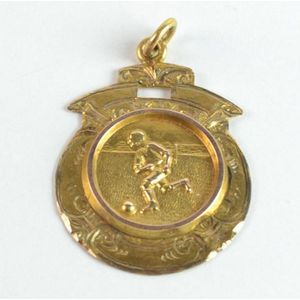Bog Oak & Crystal Tassel Earrings
You must be a subscriber, and be logged in to view price and dealer details.
Subscribe Now to view actual auction price for this item
When you subscribe, you have the option of setting the currency in which to display prices to $Au, $US, $NZ or Stg.
- Circa - A Latin term meaning 'about', often used in the antique trade to give an approximate date for the piece, usually considered to be five years on either side of the circa year. Thus, circa 1900 means the piece was made about 1900, probably between 1895 and 1905. The expression is sometimes abbreviated to c.1900.
- Oak - Native to Europe and England, oak has been used for joinery, furniture and building since the beginning of the medieval civilisation. It is a pale yellow in colour when freshly cut and darkens with age to a mid brown colour.
Oak as a furniture timber was superceded by walnut in the 17th century, and in the 18th century by mahogany,
Semi-fossilised bog oak is black in colour, and is found in peat bogs where the trees have fallen and been preserved from decay by the bog. It is used for jewellery and small carved trinkets.
Pollard oak is taken from an oak that has been regularly pollarded, that is the upper branches have been removed at the top of the trunk, result that new branches would appear, and over time the top would become ball-like. . When harvested and sawn, the timber displays a continuous surface of knotty circles. The timber was scarce and expensive and was used in more expensive pieces of furniture in the Regency and Victorian periods. - Cabochon Cut in Jewellery - A cabochon cut is a type of gemstone cutting where the stone is cut and polished in a convex shape with a flat bottom and a domed top, with no facets. This type of cut is typically used for opaque or translucent stones that have natural patterns or inclusions that are best displayed in this type of cut. Examples of stones that are often cut as cabochons include turquoise, opal, and moonstone.
- Victorian Period - The Victorian period of furniture and decorative arts design covers the reign of Queen Victoria from 1837 to 1901. There was not one dominant style of furniture in the Victorian period. Designers used and modified many historical styles such as Gothic, Tudor, Elizabethan, English Rococo, Neoclassical and others, although use of some styles, such as English Rococo and Gothic tended to dominate the furniture manufacture of the period.
The Victorian period was preceded by the Regency and William IV periods, and followed by the Edwardian period, named for Edward VII (1841 ? 1910) who was King of the United Kingdom and the British Dominions and Emperor of India for the brief period from 1901 until his death in 1910.
This item has been included into following indexes:
- bog oak - jewellery and other 20
- earrings, period or style
- earrings, set with - topaz 3,016
- pinchbeck - jewellery 53
Visually similar items

A blue topaz and diamond set pendant. 14ct yellow gold, made as an oval set pendant, centrally featuring a faceted blue topaz horizontally mounted, bezel set within a ribbed surround of gold, detailed to top and bottom with two rails of grain set diamonds,

An 18ct gold opal doublet pendant one oval opal doublet, 6.00ct, green red in colour, mounted in 18ct yellow gold and attached to a gold plated chain. Total weight 8.1grams

A Western Australian Soccer club, 9ct gold fob, medal, engraved: 'Presented to R. Ward, Most Enthusiastic, Player, 1929-30, Welbungin Soccer Club, Western, Australia, 9ct APEX'

An 18ct yellow gold doublet opal and pearl pendant one oval doublet 20 mm x 11 mm, with gold plate chain. Total weight 6.8grams
